Pernille Ripp's Blog, page 60
February 9, 2016
Some Picture Books on Friendship and Loneliness
It never fails, there always seems to be that moment where we with heavy hearts turn to our book shelves to find the perfect book to talk about loneliness. When we search for a book that will say the words that we seem unable to find ourselves. Teaching children means that there is a constant stream of friendships, both good and bad, and the heartaches that can sometimes come with growing up. So I scoured my bookshelves looking for some of our favorite books to talk about friendship, loneliness, and what it means to find your place in the world. Here are some of our favorites in room 235D.

The Seeds of Friendship by Michael Foreman is a new book to our room that tells the story of how coming together around a common purpose can inspire community.
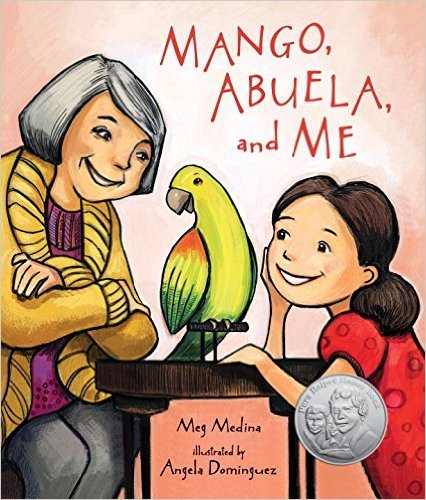
I do not hide the fact that I think Meg Medina is a writing genius and her latest picture book, Mango, Abuela, and Me illustrated by Angela Dominguez is a must add toy our collection. I loved that the story centered on the loneliness we can feel when we do not know how to connect with others different than us, even when they are supposed to be alike.

I do not know how many lists of picture books I have placed The Invisible Boy by Trudy Ludwig illustrated by Patrice Barton on, but I am sure it is many. I have used this book with several different age groups and they all get it, they can all connect, they have all felt invisible at some point.

Amy Krouse Rosenthal was the 2015 choice for Global Read Aloud’s picture book author study and she was amazing. Having 3 little girls means that unicorns are a regular topic of conversation and so when Uni the Unicorn illustrated by Brigetter Barrager came out it was a natural fit in our household. But it is not just a book for little girls, but rather a book that can remind all of us of what it feels like to be longing for one thing you are certain is out there, even when no one believes you.

What happens when a book is not read anymore, the same as when a child feels lonely. The Lonely Book by Kate Bernheimer and illustrated by Chris Sheban is a great conversation starter fora complex topic of loneliness and feeling forgotten.
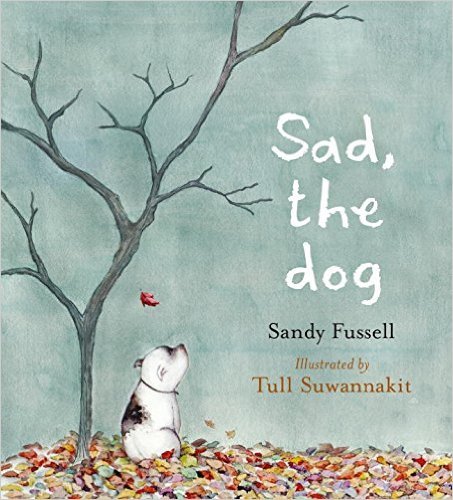
What happens when a dog is unappreciated by those who own him; the dog names himself Sad. Sad the Dog written by Sandy Fussell and illustrated by Tull Suwannakit is a great example of how we can find our place among friends even if we start off wrong.
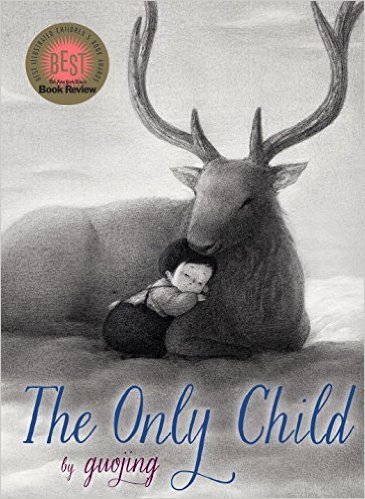
The Only Child illustrated by Guojing shines a light on the deepest kind of loneliness where a child flies into their imagination to combat the hours where they are alone. This is also a great wordless picture book to have students think of China’s one child policy which is the inspiration behind the story.
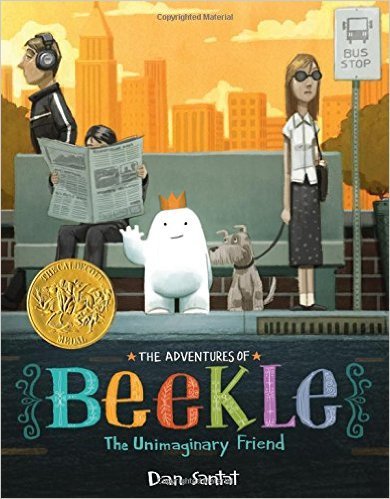
The Adventures of Beekle – the Unimaginary Friend the Caldecott medal winning book from 2015 by Dan Santat also speaks of loneliness and finding that one person that makes it all better. This book has also shown up on many of our lists and with good reason.

Say Hello by Jack & Michael Foreman shows what can happen when a simple hello is said. This is a great book for middle schoolers as they sometimes don’t see the world as it passes them by.
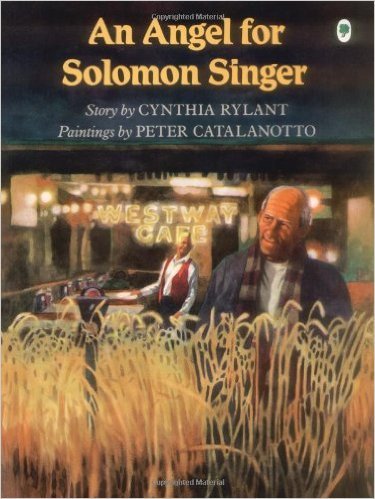
An Angel for Solomon Singer by Cynthia Rylant and illustrated by Peter Catalanotto is a must add for any picture book loving classroom. The story about Solomon who lives in a shelter and the small interactions that change his perspective is one that invites further reading and discussion.

A Piece of Home written by Jeri Watts and illustrated by Hyewon Yum is not published just yet, but can be pre-ordered and it deserves to be. The story of how a boy moves from his home country and tries to make new connections is one that many of our students can relate to and one that is sure to prompt students to share their won stories of feeling out of place.
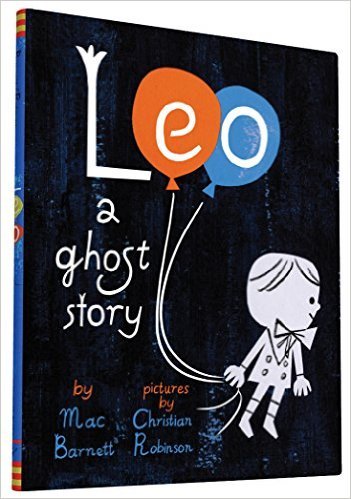
Leo: A Ghost Story written by Mac Barnett and illustrated by Christian Robinson is a book that I love as long as I don’t think about why Leo is a ghost. Once again it speaks of loneliness and the lengths we go to to try to make a friend.
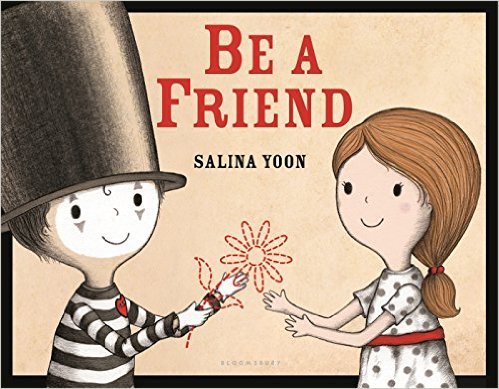
Be A Friend by Salina Yoon is at the top of my mock Caldecott list for 2017 and it is from a first time picture book author. Through its sparse text and beautiful illustrations it tells a familiar tale of what can happen when we stay true to who we are.
There are so many picture books out in the world, which do you love for starting conversations about loneliness and friendship?
To see the list of more of our favorite picture books, go here.
Filed under: being a teacher, books, Literacy, picture books, Reading


February 7, 2016
The 2030 UN Challenge – A Social Advocacy Project
In my district we are well aware of our demographics. How we mostly teach one demographic students, and while these students span an enormous socioeconomic range, they look a lot like each other. How sometimes our world can seem protected with only the biggest stories slipping through. I also teach 7th grade where the rest of the world tends to slip away as the students are focused on their own social development and their own place in the world, rather than the world that surrounds them. Yet, we try. We constantly try to engage the students in projects that will bring the rest of the world in, start conversations, and ultimately lead to change.
When AJ Juliani first posted about the 2030 UN Challenge I didn’t much notice it. He has a lot of great idea but this one slipped by until my awesome colleague , Reidun Bures, brought it up to me again. We decided that this was the perfect opportunity to collaborate between our classes, but more importantly to simply make our students more aware of the major challenges that faces our world.
So for the past 3 weeks, we have combined classes and worked on the 2030 UN Challenge. Students watched the video listing the 17 goals that the UN has set for the next 15 years (it came out in 2015) and then decided which goal they would focus their project on.

Once their “lens” had been chosen, they had to narrow their scope. Where in the world would they focus their research knowing that they had to present their information in an infographic to the rest of the class. Some chose to focus locally in our very county or state, while others went to far-flung regions that sought their attention. Students then spent five 90-minute blocks, every other day, researching their “problem.” Examples were racial inequity in Dane County, water quality in the United States, gender inequity in education in Pakistan, the extinction of sharks due to shark fin soup, the gender pay gap in the United States and so many other projects. We were blown away by the passion they had for their problem.
But we didn’t just want to them to become aware, we wanted them to realize that they could make a difference. So part of their project became an advocacy piece as well; either highlight a group that is already working to solve the problem such as Black Lives Matter, the Water Project, or Second Harvest Food Bank, or come up with actual things that your fellow students can do. It was amazing.
On the final day of the project, students had to present their infographic and their advocacy piece to the class. As one student said, “Can I present more than once because I really want people to hear this.” It was clear that many students were passionate about their project, wanted others to hear them, and wanted to make a difference. But even more importantly the knowledge that crept into the consciousness of the minds of our students was unmatched. They may not all go on to change the world but at least they have heard what some of the major challenges that affect us as a human race are. At least they have had a window opened once again to the world, supporting what our other amazing teachers try to do, hopefully inspiring them become more aware. It was more than once that a pair of students called us over to share a fact with us, disbelieving that it was true.
So why share? Because this small projet has made a difference and has made an impact on us that we were not expecting. So we hope you will take the pledge; do the 2030 UN Challenge in whichever way suits your kids and open up the world more. Go here for more information or check out the original post from AJ Juliani.
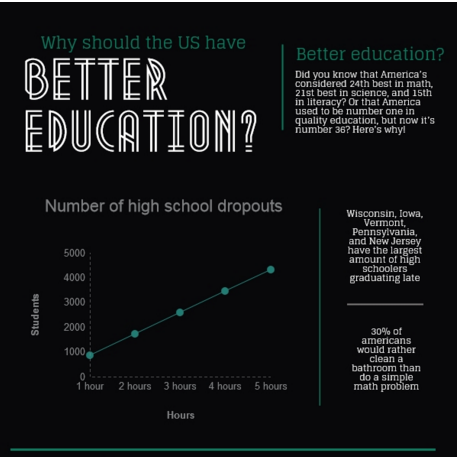
Part of one student’s infographic.
Also if you are looking for another small global project, join the 1 School 1 World project on February 22nd, where classrooms around the world will share a picture of what their learning environment looks like using the hashtag #1S1W – for more information and to sign up, go here.
To see more of the how-to of what we did, go here.
Filed under: Be the change, being a student, being a teacher, projects


February 6, 2016
When We Harm Rather than Help – Some Thoughts on Reading Interventions

We read to Thea in the womb like all the fancy books told us to. Surrounded her with books from the moment she was born. We read every night creating memories. We pointed to text, had her touch the books she loved as much as she wanted. Some still have chewed up corners. We followed all the steps that it takes to create a reader, and yet, when she started to learn to read, it did not come naturally. It was hard and it continues to be hard. She works for every single letter, for every single word, for every single page. And she has incredible support from her teachers. We are lucky. They protect her love of reading with everything they’ve got.
Yet, some kids are not as lucky as Thea. The very interventions that are meant to help end up harming their love of reading. The very skills we try to teach end up taking precedent above everything else, leaving us with a child that perhaps can read better but will never do so on their own.
There are many well-meaning things that we have done throughout our teaching that is not good for children. That is not good for those that so need us to be great teachers. Those kids that need us more than others, need the very best of us, sometimes get the worst.
So as we think of our reading intervention, of the very programs and ideas that we have in place for those who need extra instruction, we must make sure that we are not harming. That the very children we speak of so often do not end up victims of misguided attempts to help. Because there are a few things that seem to happen more often to children who are in reading intervention than those who are not. A few tendencies that can be problematic.
They get pulled from the “fun” classes. How often do we schedule their intervention to be when the class is doing something that is more hands-on or exploratory? I have had students that had not had science for several years. Yet students who are developing readers need those experiences as much as the other students. When a child gets pulled like that it signals that those classes are not as important, and that the child will not need those skills. Yet, often this is where students can be the most successful. The best solution is to create a school-wide resource time, different from grade level to grade level, that offers a window for all students to receive intervention or enrichment.
They get shorter text. Thanks to the wisdom of Penny Kittle I have been thinking a lot about text length and how we do not give our developing readers long texts. Instead much of our intervention instruction is based on short text, yet that means they build no stamina. And without stamina they cannot be free of intervention since they will struggle with sustained concentration. That doesn’t just happen, it is experienced over and over as we build the text lengths. So vary the length and use an independent reading book (self-chosen, of course) to teach the skills. Use actual reading materials and not just the scripted versions so that students can have true buy-in.
They are spoken at more. With intervention comes more instruction, yet often what students need is more practice. Why is it that when a child struggle our first inclination is to re-explain, give further instruction ,and then interrupt. Rather than allow them to ask questions, teach briefly and then give them time to work with the skill. We already have a teacher talk epidemic in our schools, think of how much more teacher talk these students receive.
They have more repetition. I believe in revisiting texts, this is part of the reason I love picture books so much. Yet, the constant repetition where students may read the same passage 5 days in a row is hard to understand. When we know how intimately motivation is linked with student achievement, why do we create conditions where students automatically tune out because it is the same passage over and over? Instead, use it for a few days and then change it up. Find something with a common theme and then work on transfer of skills through that.
They have less choice. It seems the older our students get, the less choice and control they have. Yet, developing readers need more choice. Sure, we can help guide them but telling them what their lexile level is, or whatever other box we choose to put them in, in order for them to select a text from that level but that is not guidance. It is dictation. Furthermore, expecting them to then develop natural reading habits which include the ability to self-select books as discussed by Donalyn Miller and many others, when they have not had the opportunity to makes little sense. If we want students to love reading and to transfer the skills that they learn in intervention (or regular instruction) then they must have choice. They must be able to have the chance to figure out what books work for them or not. And why.
They have less time. If we want students to become better readers they need more time to read. So if we are doing intervention, giving them time to read a self-selected book should be a major component. Not just all of the skill teaching. And if a child is being pulled during their in-class independent reading time to receive intervention there is a serious scheduling and priority problem.
They get challenged less. In the past, I was lulled into thinking that my developing readers could not handle complex thinking tasks. However, my students have proven me wrong and I am thankful for that. A developing reader, or a reader who struggles, does not have a thinking problem and yet we often differentiate in such a way that students who receive intervention do not get the same challenging questions or projects as other students. Yes, we should differentiate to scaffold all learners, but not when they do not need it. Access to text is one thing, access to thinking is another.
They stay in intervention. If the same child stays in intervention year after year without the possibility of release then we must re-examine the very interventions we are implementing. While many programs work, must do not work for ALL students. Do we have instruction in place that will benefit each individual child or only some?
They get interrupted more. Call it the plight of the conscientious teacher, but when students struggle we tend to interrupt all of the time. We check in, we re-explain, we teach them more, often without checking to see if they need it. We read aloud constantly interrupting the story to model our own thinking. No wonder people who are interrupted have a harder time reaching a state of flow. So before we are helpful make sure the help is needed. Otherwise we are harming more than helping.
They tend to be asked to be vulnerable more often. I see how my own daughter feels about reading and how hard it is. I have had students confide in me how hard it is to admit in front of others, especially good readers, how difficult reading is for them. Yet, we tend to ask probing questions more often to the students who need intervention. We ask them to open up in a way that we don’t expect of other students. I know this trust and intimacy of knowledge is necessary to be the best teacher for them but we need to be aware of the vulnerable position we are placing students in. We don’t have a right to know their feelings, we can earn their trust and then ask.
They tend to be defined by their struggle. When a child struggles with reading we often assume they will struggle with everything. After all, reading comprehension is the foundation of it all. Yet, that mindset is dangerous as it leads to lower expectations which in turn leads to less challenges. We get “pleasantly” surprised more often with lower expectations as we teach a child that if they cannot read well then they must be bad at everything in school.
I have seen incredible intervention programs that have created powerful readers. I have seen programs that chopped reading into little bits that did little to help all students. I think that most reading intervention programs lie somewhere in the middle. They work for some and not for others. So I write this post not to judge, but to question the things we end up doing, for in our habits we often dismiss our own flaws. In our programs we sometimes forego common sense but that doesn’t mean we can’t change. We just need to re-examine our practices honestly.
If you like what you read here, consider reading my book Passionate Learners – How to Engage and Empower Your Students. Also, if you are wondering where I will be in the coming year or would like to have me speak, please see this page.
Filed under: aha moment, Be the change, being a teacher, Literacy, Reading


February 5, 2016
I Carry the Words
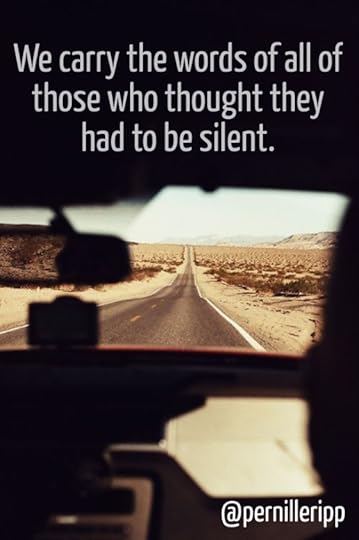
I carry the words of my students with me everywhere I go.
Their dreams. Their hopes. Their wrapped up identities as they try to find their voice.
I carry the story of the boy who cried. The girl who fought injustice and the students who knew no better way.
I carry the hopes of teachers who share. Who reach out and ask for help. Who know that there has to be a better way and lay awake searching for it every night. Hoping to not feel so alone, hoping to not feel so crazy. I carry their words into the light whenever I can because we have all felt crazy, we have all felt devalued, we have all felt like we cannot teach one more day and yet have gone on, knowing that our students would wait for us with their dreams held in their hands, hoping that today would be the day that makes a difference.
I carry the words of my daughter who wants to be an artist, a singer, an animal doctor, but most of all a teacher. Who worries what others think and cares too much. Who wakes up tired and yet gives it her best. Who loves with all of her heart even when it hurts.
The words of the girl who had no food. The boy who had no friends. The child that wasn’t really a child taking care of their sibling late into the night. Or the children who told me that school was not for them but for those others kids who had it all figured out.
I carry the words of the girl who knew she could do better. Of the child who did not conform. Of the student that made me cry and shake my head in frustration, knowing that I was not the best teacher I could be even though I wanted to.
I carry my own words, sometimes loudly, other times so quietly that I cannot hear them myself, so that others may see that they too can have a voice. That our world is made better when we share, even our fears. That we are not determined by our weaknesses but instead on our struggle to overcome them.
I did not set out to carry the words but they kept tumbling at me. And so I walk on knowing that my path is perhaps not set, but the words that I carry will push me forward, always hoping for someone to listen.
I carry the words of my students so that their voices can be heard. Of all of the kids who found their voice and now will never be silenced. The words that mean that their dreams live on, hopefully pushing the minds of others.
I carry the words and so do you. Let us never forget that.
Filed under: being a teacher, being me


I Am Not a Writer – On Developing Student Writing Identity
I have taught writing for 8 years. 8 years of outlines, of brainstorms, of on-demand writing. Of peer editing and feedback cycles. Of writer’s notebooks to mine for ideas. Of blank stares and “I have nothing to write.” And never once did I think deeply about the writing process.
I knew I had to write with my students. I knew I had to develop my own writing in front of them. I knew that writers needed different conditions to spark creativity. And yet, we still followed a pretty linear process, a one path to greatness type of ideal. We write different pieces but all for the same purpose.
This summer, I was asked to speak out loud while I wrote to be part of a series of videos called Wisconsin Writes. I was asked to write in front of a camera and a person and just talk as I wrote, providing a running commentary on how my process worked. It was awkward. It was stilted. But it was also enlightening. That is not the writing process I teach.
Yesterday Jacqueline Woodson spoke about her writing process. An offhand comment about how she doesn’t outline but just keeps asking “what if.” Sees where the story takes her and then jumps from piece to piece when she gets bored. She knows there is a story, she just doesn’t know what it is. That is not the writing process I teach.
Last night, Donalyn Miller and I spoke about writing and her words sit with me still; there is not one process to writing, there are many. I know this as a writer myself, so why have I forgotten it so often in the classroom?
Our job as teachers who write is to help students uncover their writing identity. To show them many different ways of writing and constantly asking them to find what works for them. To ask questions rather than dictate a path. To have them reflect on the very creative process that they undergo. We should not just be assessing their final product but instead support them uncovering their process. Because their process will be distinctly unique much like ours is.
So as I turn my eyes on developing writer identities, there are a few things I must keep in mind.
All writers are writers. We say this all the time but if we do not give them opportunities to feel like successful writers then they will never believe us. So writing must be bigger than one thing. Writing must be about thinking like a writer, feeling a writer, and not just producing.
All writers need time. We tend to think that writing is only happening when students are physically writing, but most of us know that writing is also thinking, mulling, abandoning and coming back to our work. That writing is an unseen process most of the time and the actual act of writing is the product of something so much bigger. So why do we expect students to write right away?
All writers need choice. Not just in what they write, but also how they write. That choice can be whether it is typed or handwritten, where they physically write but also who they write for. Different audiences require different thought processes.
All writers need ownership. We expect students to want to share their writing all the time, whether with others through peer editing, feedback or simply celebrating their writing by making it public. But not all written work needs to be shared. Some things are just for the authors and that is to be celebrated as well.
All writers need to end it. Why must every piece be finished? Why must every piece be edited? When we tell students that they can start something and when they feel it is done, it is done, it gives them courage to write more. It gives them ownership over completion rather than asking the teacher whether something is done or not.
All writers write differently. Much like my writing process is one that only suits me, the writing process of my students is uniquely theirs. Yet we keep squeezing them into a box of how writers write and then wonder when their writing isn’t powerful.
All writers need self-discovery. We need to lead conversations where students can put into words what their process is. So using videos of writers speaking about their process gives us a common language and starting point to talk about their writing process. Our writing instruction needs to encompass all aspects of writing, not just the visible part of it, but the thinking, the journey, the progress. We need to bring that into the open so that students can understand what it really means to write.
All students need questions. When someone says they are not a writer, we must ask “Why?” And if they are not sure then keep asking questions. Most students say they are bad writers because they cannot spell. Because they cannot come up with ideas. Because writing is for other kids. But writing is bigger than that. Writing is about finding a way to express the thoughts that jumble our heads. Not just being a great speller. Or being like others.
I have a long way to go. I have a long way to teach. I have some big conversations to have with my students and I cannot wait. We are all different yet our difference is what makes us unique writers. What makes our writing powerful.
Filed under: aha moment, being a teacher, writing


February 3, 2016
What It’s Like to Live Online – A Student’s Perspective
My students started blogging yesterday, all trying to use it as a platform to start conversations with others. I was blown away by many of their posts and thought I would share at least one. Philip’s below was one of my favorites. If you would like to see more, and they are pretty amazing, please go here.
Yes, hello. My name is Philip. However, now that we are communicating through online sources, you are to call me Pom, as that is what my friends have called me over the years online. I spend most of my time on the computer, and I enjoy playing video games. Now, you’re not safe at the moment. Allow me to explain what’s going on:
You have just fallen into a abyss, when you were exploring a mountain. This hole, led to the dimension known as “The Internet.” The Internet is a land that can only be monitored from a computer screen. It’s quite the mysterious place. Now, it is VERY important that you follow my lead. I have a bit to tell you .
Okay, so, The Internet has three main lands: Mozilla Firefox, Internet Explorer, and Google Chrome. It doesn’t really matter which main land you’re in, there’s just different kinds of cities in each main land. In Mozilla Firefox, lay the cities of Facebook, Pinterest, and the Property of the Dropbox Factory. In Internet Explorer, lay the cities of 4Chan, Reddit, and the lost city of MySpace. At last, we reach Google Chrome. Here, you will find the cities of Tumblr, Vine, and Instagram.
I have one final thing to tell you, and that is about each city.
Facebook: A typical suburb, with suburban mother, lots of school soccer teams, and more.
Pinterest: A cute town full of many sweet people, and artisans. All are welcome!
Drop Box Factory: A manufacturing business similar to Amazon, eBay, etc.
4Chan: A corrupt city. There are good parts, and VERY BAD PARTS. People say, that what is seen here, can not be unseen.
Reddit: The smartypants city that likes to vent and complain, but it’s a very fun city nonetheless. Check it out if you’re up for some debates.
MySpace: A destroyed city from ages ago, when people invaded. All the citizens left after Facebook had been opened. Now, shady people like to hang out there.
Tumblr: Very corrupt, very addicting, very nosy. The city is split into groups called “Fandoms,” where they are interested in other things. They often argue. Pinterest is a kind version is Tumblr.
Vine/Instagram: Two cities which I personally can’t stand, but fit in the same category. Lot’s of children, lot’s of people who don’t know what they are talking about for most of the time. However, Instagram is a good place for business, as that is where YouTube Inc. is located.
Now that you know what’s around here, you have to learn the lifestyle, but we will save that for another day….
Filed under: being a teacher, student voice


February 2, 2016
The Professional Books that Changed Me as a Teacher
When I first started teaching, I devoured parts of books like a starved teacher. And by parts of books, I mean parts of books. I would start to read, grab some ideas and then get too busy to read on. After a few years, I stopped. Not that I did not need to keep growing, I just had changed my focus to reading blogs instead of books.
Lately, though, I have been turning back to books. For finding the time to read an entire piece of work as I try to grow and become better. I have highlighted the things that make me think, discussed ideas with others (Voxer is great for a small book discussion) and reflected until my brain hurt.
And I am changed. I have these ideas that seem to want to burst out of me, that I cannot wait for students to digest along with me, so that we can become better together. So what have made a difference to me?

Alfie Kohn’s The Homework Myth
A quote:
“But as I mastered the material, homework ceased to be necessary. A no homework policy is a challenge to me,” he adds. “I am forced to create lessons that are so good no further drilling is required when the lessons are completed.”
Why it matters:
The research and the reasons compiled in here made me quit homeowrk. I would say that that has been one of the biggest and best decisions I have ever made as a teacher.
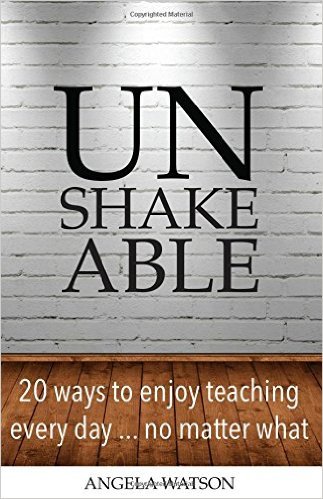
A quote:
“All the planning and scheduling is meant to control the other demands on your time—email, grading, paperwork, etc.—so that you are better able to focus on your students in class.”
Why it matters:
Angela Watson never ceases to amaze with her ideas for how to make our teaching lives better. This book has the best of her wisdom on how we can fall even more in love with teaching.

Awakened also by Angela Watson
A quote:
“Being awakened is the initial realization of truth, the moment when the light illuminates a situation and you can see it clearly for the first time. Growth begins there, but a true awakening is a process. It’s a daily decision to choose thoughts that lead to the right attitude. It’s an ongoing choice to act in ways that align with wisdom and not with one’s current perception or mood.”
Why it matters:
Several years ago, when I was at my lowest point as a teacher, this book arrived and changed my thinking. I still use the principles that Angela discussed in the book of replacing your negative thinking.

Donalyn Miller Reading in the Wild
A quote:
“If we really want our students to become wild readers, independent of our support and oversight, sometimes the best thing we can do is get out of the way.”
Why it matters:
This book taught me that creating students who can read outside of our classrooms is a vital task for teachers. It has propelled me to change the reading instruction I do and also led to many deep conversations about reading identity.

Donalyn Miller The Book Whisperer
A quote:
“I am a reader, a flashlight-under-the-covers, carries-a-book-everywhere-I-go, don’t-look-at-my-Amazon-bill. I choose purses based on whether I can cram a paperback into them, and my books are the first items I pack into a suitcase. I am the person who family and friends call when they need a book recommendation or cannot remember who wrote Heidi. My identity as a person is so entwined with my love of reading and books that I cannot separate the two.”
Why it matters:
This book made me trust myself as a teacher of reading. It gave me permission to fight back, to protect the love of reading, and to do something about those who did not love reading. This should be required reading for all teachers, whether you teach reading or not.
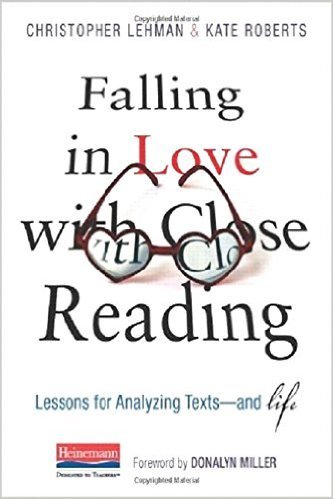
Christopher Lehman and Kate Roberts Falling In Love With Close Reading
A quote:
“We see the ritual of close reading not just as a method of doing the academic work of looking closely at text-evidence, word choice, and structure, but as an opportunity to bring those practices together to empower our students to see the subtle messages in texts and in their lives.”
Why it matters:
This book stopped my fear of repetition and digging deeper into text. Enough said.
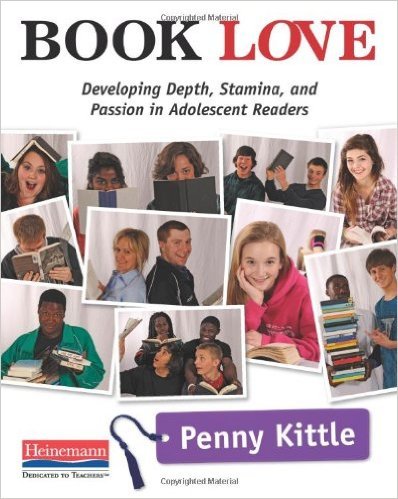
A quote:
“I believe each of my students must craft an individual reading life of challenge, whim, curiosity, and hunger, and I’ve discovered that it is not too late in high school to lead a non-reader to reading. It’s never too late.”
Why it matters:
What the Book Whisperer did for me while teaching 4th grade, Book Love is doing for me while I teach 7th. Penny Kittle’s wisdom, research, as well as practical ideas is making this book my most recommended book of 2016 so far.

A quote:
“…Shouldn’t schools be the place where students interact with interesting books? Shouldn’t the faculty have an ongoing laser-like commitment to put good books in our students’ hands? Shouldn’t this be a front-burner issue at all times?”
Why it matters:
If you are looking for urgency in your teaching, this is the book that will bring it to you. Readicide was one of the first books that made me want to do something now to change the way we teach reading.
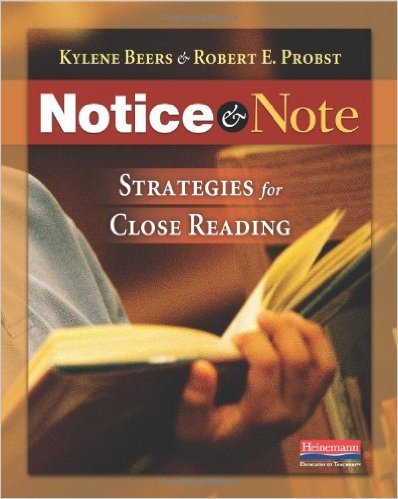
Kylene Beers and Bob Probst Notice and Note
A quote:
“The most rigorous reading is to find what those words on that page mean in our own lives.”
Why it matters:
This book transformed (and transform) how I approach reading instruction with my students, giving them a key to unlock the secrets of the text. This is one of the biggest gifts I can give them as they read more complex materials.
Then there are the books that I have in my to read pile
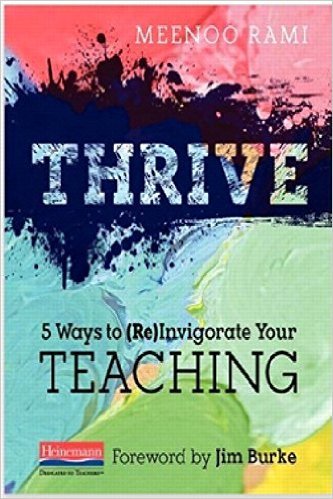
A quote:
“To be fully engaged in our work, we need to bring our authentic voice.”
Why it matters:
I have read parts of this book before, however, I need to sit down and read it all in order. Meeno is an incredibly smart woman and so I know that her thoughts will make me a better teacher.
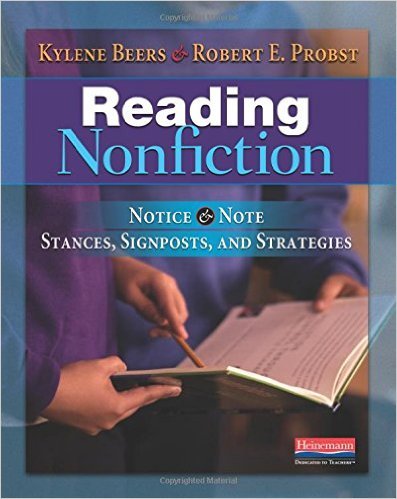
Kylene Beers and Bob Probst Reading Nonfiction – Notice and Note
A quote:
“When students recognize that nonfiction ought to challenge us, ought to slow us down and make us think, then they’re more likely to become close readers.”
Why it matters:
The reading of nonfiction is something I have struggled with and this books provides me with the starting points for deeper conversations.

Katie Muhtaris and Kristin Ziemke Amplify
A Quote:
“Using technology doesn’t mean that we throw out those strategies that we’ve found to be successful with students. It’s not the tools—it’s what we do with them that counts.”
Why it matters:
I have integrated technology for the past 6 years in our classroom, and yet I know that these ladies have some incredible ideas that I have not thought of. Although it is targeted to K-6 I know there are ideas for 7th in there as well.

Teri S. Lesene’s Reading Ladders
A Quote:
Many of us are searching continually for that just-right book for each and every one of our students. It is my hope to help you find those books. More importantly, I hope to help you guide students to the next great book and the one after that. That is the purpose of Reading Ladders. Because it is not sufficient to find just one book for each reader.
Why it matters:
Teri Lesene is not only a fierce protector of the love of reading but brliiant, intimidatingly so. This book is a must for anyone trying to develop reading identities in their classrooms.
I know I am forgetting some but wanted to share in case anyone was looking for a great new read to change their teaching. Which books have you read that have transformed you? Which books did I miss?
If you like what you read here, consider reading my book Passionate Learners – How to Engage and Empower Your Students. Also, if you are wondering where I will be in the coming year or would like to have me speak, please see this page.
Filed under: being a teacher, being me, books


January 31, 2016
So You Teach a Whole Class Novel – A Small Idea to Help

I spend too many hours thinking of my students love (or lack of love) of reading. Of how the things that we do together hopefully is enough to sustain that love for words. That this year is another part of their journey as readers, as humans who know that reading can unlock the powers of the universe. And so I think of what is ahead. Of whether they are truly “Wild readers” to quote Donalyn Miller. Whether they have the stamina they need to be successful in college to quote Penny Kittle. And whether the type of literacy instruction they will receive in the years to come will allow them to continue to love books. To still read something that they choose. To still see themselves as children who read for fun, not by force.
Today, as I sat next to a friend who teaches high school English, we discussed the concept of the whole class novel. Something I have opened up for discussion here. There are districts that mandate that the whole class novel is used for all students, no matter their comprehension ability, which is another blog post in itself, and yet, it reminds me that not everyone works in an environment that trusts its teachers to teach all students, no matter their ability.
So if you teach the whole class novel, whether by choice or force, there is a very little tweak that may make it accessible to all students. Because if we want the whole class novel to be a vessel for deeper literature conversation and yet we have students who cannot access the text, then we must find a way for them to be successful. The idea is simple, really. Create different pathways to access the text by allowing students to select which method they will use. Those pathways can be:
I choose to read it on my own, ready to come to discussion. This is the most common pathway of doing a whole class novel but it cannot be the only one. Think of how many students where this act would be impossible. Where they would rather defiantly not read then even try.
I choose to read the book with a partner and we discuss as we read. Sometimes when we struggle all we need is a trusted adviser to bring us through the hard parts. We see this happen in our classrooms all of the time; students reaching out for help, and then going to back to their task renewed. Why not let them do that formally?
I choose to have it read aloud with the teacher in a small group. Sometimes we need an adult voice to carry students through, other times you just need a community of readers to help you process the text, let alone the finer nuances behind the words. Having a teacher at the helm and making it a read aloud means that it has no longer become an exercise of decoding, but rather one of comprehension.
I choose to listen to the text. I know some frown upon the use of audio books in our literacy classrooms, but they can be the game changer for some of our most disillusioned non-reading students. If our goal is to use a whole class novel for students to think deeply about a text, then why not remove the barrier of the text itself? If a child cannot read a text then the instruction of how to read it should happen with a text that they can access, not something that is far beyond their current skill level.
That’s it really. Offering student choice in how they access the learning we must do, allows them to find success even within the most mandated curriculum. We must remember our task at hand; to have rich discussion, so let’s make sure that all of our students can be a part of that, not just the ones that have mastered the act of reading at a certain level.
If you like what you read here, consider reading my book Passionate Learners – How to Engage and Empower Your Students. Also, if you are wondering where I will be in the coming year or would like to have me speak, please see this page.
Filed under: aha moment, Be the change, being a teacher, books, change, Literacy, Reading, student choice, Student Engagement


January 30, 2016
29,015 Reasons Why My Ego May Get Too Big
29,015
My Twitter follower number as of this morning at 5 AM.
29,015 people around the world who are not all people I know. Who are not all my mother. I have not paid for those followers. I have not asked people to follow me. I have not used a service nor any strategies to get that many. I have, however, been tweeting for 6 years.
29,015 people read what I tweet. That is a good sized town.
29,015 people care about me and my words. Or so it seems from the number.
29,015 people and I know why it is easy to get a big head. My students tell me I am famous. I laugh and tell them I am “Googleable” and that there is a big difference. And yet, in their eyes I carry power. In some other people’s eyes, my words seem to matter more because look at how many people follow me. Surely they cannot be wrong.
Yet, that number does not tell the whole truth. That number easily inflates an ego, makes you think somehow that your words or ideas are more important than someone who does not have as big of a reach. That you cannot make mistakes. That the world is indeed a stage and all of those others are an audience waiting for your wisdom.
That little number, or likes, or favorites, or shares or whichever tool that can now seemingly measure our influence can really mess with our own sense of self importance. And I see it happen, I see people create a divide of those who have many followers and those who have not. As if a large number of followers somehow makes you a better human being. A better educator. As if your words should carry more power because they have a larger audience. That because you are connected and people respond to you, you are better than the teacher who is not connected, or who is not at your level of reach.
It is so easy to lose sight of what it really means. I see people use their platform to promote themselves rather than keep it about the kids. I see lines of popularity drawn in the sand, conversations not being had because we do not want to bother someone who seems more important. I see hurt feelings, misunderstandings, and completely forgetting why we got on Twitter in the first place; the kids. The chance to make the world better. The chance to become better. As if once you reach a certain follower count, you have somehow figured it all out.
But the truth is, we are not as important as our follower count can make us feel.
We are not better. We are not perfect, nor are we always right. We do not know all of the answers on how to solve education. On how to be the best teachers. We have ideas, yes, we have thoughts, yes, but we also need to remember that our words only matter if they help kids.
29,015 – writing the number makes me cringe. Because it is not about that but others may say it is. That I am important, because all of those followers cannot be wrong. I am humbled by the trust that others put in me and reminded of why I tweet. It is not to get a book deal, a speaking gig, a trending hashtag, or anything else that may be bestowed upon some with large follower counts. I tweet, write, connect because I realized that I could not keep on teaching the way I had and I needed to find others who could hep me. And I found them and I am finding them as I grow.
I wish our counts were private, then perhaps we would all go back to feeling equal. Then perhaps we wouldn’t think that we somehow deserved more attention than others. Perhaps we can pretend and remember that we are all just educators trying to make a difference for the very children we teach. And that is the real reason I connect.
Filed under: Be the change, being a teacher, being me


January 29, 2016
Enough with the Teacher Talk- Ideas for Getting More Student Talk

“I wish you would talk less…”
The comment smacks me in the face over and over as I read my 6th hour students’ feedback for the semester.. At first, I think they must be forgetting how little I speak. How much work time I give them. How they clearly must be wrong, because I am the queen of not speaking much.
Yet, that very next day I realize that they are right. As I teach my 6th hour, the one right after lunch, I see how much longer I take to get directions. How much more information I give them. How my brain seems to work a little slower right after lunch and I am talking myself back into the lesson. At the expense of their time. At the expense of their attention span. And their eyes glaze over so I speak more to get them excited It’s a vicious cycle.
And I am not the only one speaking too much. As I do workshops on student engagement, I keep adding m0re and more research on teacher talk versus student talk. The research is startling; according to John Hattie teachers ask between 200 and 300 questions a day, whereas most students ask 2. 2...And those questions are typically clarification questions.
Teachers dominate classroom talk speaking anywhere between 60% to 75% of the time. That means in an average 45 minute English class, the teacher may lead the conversation an average of 27 to 33 minutes, leaving little time for most students to speak. And while I know I do not speak that much in any class, unless we are learning an entirely new concept, I also know that most of us think we speak a lot less than we actually do. And I also know that the more my students seem disengaged, the louder I speak.
So what can be done to limit teacher talk. To create an environment where students have a much bigger chance to discuss and explore? Where every child has a voice and someone to hear it?
Own your talking. Like I said, I thought I was quick to get to the point, apparently not. If we won’t acknowledge that we talk too much we won’t see an impetus for change. And if you are not sure, ask your students.
Set a timer. I generally allow myself 10 minutes to teach a concept leaving 25 minutes for the students to work and me to do one-to-one or small group instruction (25 minutes because we start with 10 minutes of independent reading). I thought I was pretty good at keeping it to 10 minutes but my surveys are telling me otherwise. Time to pull the timer out again.
Have students answer in a group. Too often, we rely on the call out question and answer, which is not the type of talk we should be trying to generate since it only allows one student to speak. I often have students give their answers in their table groups instead and then have them share out. I find that it opens up the classroom for much deeper discussions since many students become invested in the conversation, and it also means that students who may have been confused get a chance to try out some ideas or unscramble their thoughts. Turn and talk also works for this. Circulate instead and pick up on their answers that way.
Avoid the echo. The best advice I received my first year as a teacher was to stop echoing student answers back to them and yet, I still catch myself doing it every now and again. Our job is not to be the voice of the classroom, it is to give students a way to be the voice. So when a child gives an answer do not repeat it, if the class did not hear it then have them ask for it to be repeated.
Change your questions. No more call and response, instead have open-ended questions that will lead to a discussion. I know this, yet I forget at times, I will therefore be writing some big questions down on a post-it to remind me.
Just ask the question. Too often when we ask a question, it becomes a long rambling sentence filled with anecdotes and extra information. Yet this ends up confusing students more and we then have to repeat the question. So get to the point and then add afterwards for those students who need it.
Stop the unnecessary repetitions. How often do we teach to the students who do not get it rather than assume that most will? So rather than over-explain, state the instructions and then head over and check in with those students who may not have understood. Think of how often we explain more than necessary because we are worried that a few students may not get it while the others have? Stop explaining so much and teach instead to those that do need it.
Stop interrupting. How many read alouds have we interrupted to ask just one more question? How many times have students been in the zone working and we have borken their concentration to do a quick check-in. I think I do it because that looks like teaching to me; a busy teacher asking lots of questions. Find the right time to interrupt, enjoy your read aloud rather than constantly model what you are thinking. Limit it to the very best things so that students can reach a state of flow more often.
Be mentally ready after a break. The hour that told me I spoke the most is the one right after lunch, where my brain has had a nice break and I feel more relaxed. Yet, I often enter the classroom right when my students enter and then launch into class. Get your brain woken up by revisiting (mentally or on paper) your main points of instructions. Take a few minutes to wake yourself up so that you are back in teaching mode, because when we don’t we end up rambling.
Encourage student talk. By emphasizing the importance of students speaking up, asking questions, discussing and dissecting, we can create communities where all students are heard, where all voices are part of the learning. My amazing principal, Shannon Anderson, gave me the idea of giving each child two markers that they use when they want to speak. All students need to have used a marker in the group before they can use their second one. While I have not tried this yet, I want to try it for book club discussions to make sure all students feel they can speak and that not one voice dominates the conversations.
As little as we think we speak, I think it is vital to take the pulse of our classrooms every now and again. We would all like to think that our words are dripping wisdom, but how often do we ramble on when students are ready to work? So check yourself and your talk, ask your students, and then change your ways. I never want to be main voice of the classroom, none of us do, but it takes changing our deep-seated ways to truly change it. We can create classrooms filled with passionate learners but to do it, students have to have a voice.
If you like what you read here, consider reading my book Passionate Learners – How to Engage and Empower Your Students. Also, if you are wondering where I will be in the coming year or would like to have me speak, please see this page.
Filed under: aha moment, Be the change, being a student, being a teacher, being me, student voice





